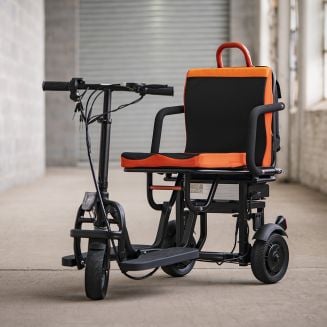Our Question: What would you do to make your campus more inclusive for people with disabilities?
Chrisa Mapes
University of Arizona

Awareness Creates Inclusivity Through Architectural Design
Architecture and the design of buildings have the potential to create or break down interactions between able-bodied people and those with disabilities. As a student of architecture, the topic of accessibility is frequently discussed separately in terms of the population being served, usually focusing on either the able-bodied population or those with disabilities, each requiring separate accommodations. Due to the generally theoretical nature of the education, it is not uncommon for codes and conditions that make a building a better and safer place for people with disabilities to be skimmed over or even overlooked. Because these important aspects take a "back seat" to the conceptual focus of the design, the concept as intended is often only able to be fully experienced by able-bodied people.
While this educational practice of disregarding codes and laws is not acceptable in the professional world, I believe it leads to the creation of architects who do not understand exactly how essential the role a building has in the ability to create barriers for people with disabilities, forcing them to take elevators or being confined to separate pathways with ramps, taking separate routes than those more physically able. Fortunately, architects also have the ability to create buildings that are inclusive to both user groups as a way to bring them together and create a community rather than clusters of people cohabitating.
In my education and my involvement with a non-profit organization called Freedom by Design, I was exposed to not only the barriers that building design can create but I was also able to experience inclusive buildings. One of the defining experiences was touring Washington D.C. as well as the University of Arizona campus and its nearby surroundings in a wheelchair. The difficulty of that endeavor, realizing that it is the everyday circumstance in the lives of people who deserve to experience life in the same way as any other individual, created an awareness that was able to be applied to consequent designs.
I believe in order to make my campus and campuses across the world more inclusive, it is a crucial step to educate young architects in the area of universal design. While the University of Arizona has made great strides to provide accessibility to all, there is a level beyond the basic minimum requirements that architecture can and should address which includes fostering relationships between users and creating inclusiveness. Additionally, it is essential to stress the importance of the experience for every individual, using these codes and laws usually seen as restrictions as a means for furthering the creativity of the building and its design as a means to create a comprehensive building for all those who use it.
In a time where energy efficiency and conceptual development are stressed as defining factors of what makes any one piece of architecture great, it is just as important to include the designs ability to stimulate positive relationships among all user groups, including the interaction between able-bodied and disabled people whether it be a social gathering or passing in the halls on campus.







